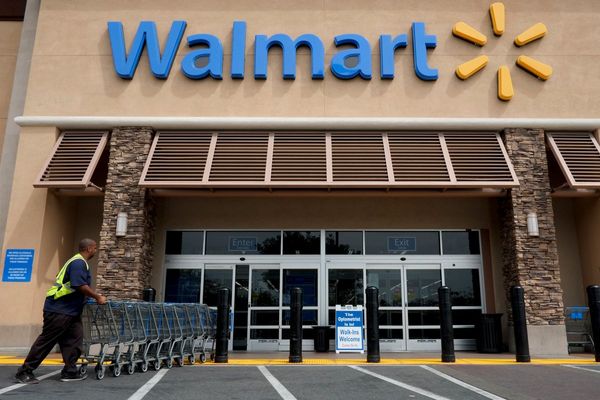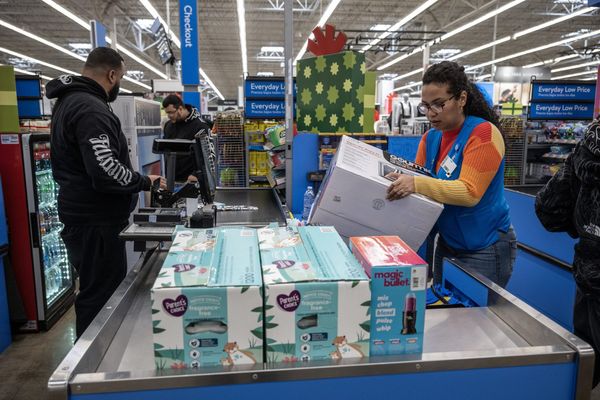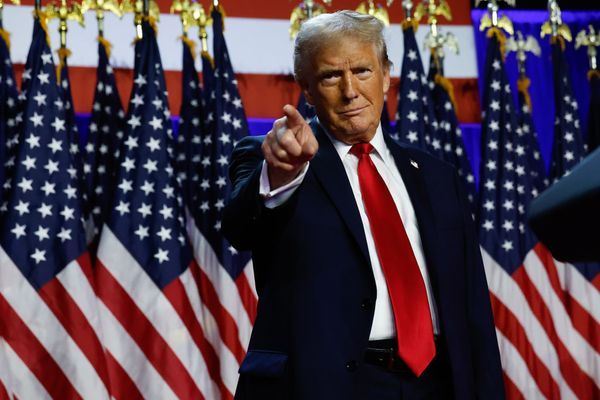
Before Donald Trump became president, tariffs were a topic largely confined to history books. But as Trump prepares to reenter the White House with a proposal to significantly expand tariffs, they seem to be on everyone's mind.
Several retailers affected by the tariffs Trump enacted in his first term have said they would likely raise prices on products if they are expanded in his second. On Tuesday, Walmart became the latest to address the potential effect of tariffs, which Trump has suggested could be 10% to 20% across the board and at least 60% on imports from China.
The impetus behind tariffs is often to level the economic playing field, such as to avoid letting China subsidize production to create monopolies, said Usha Haley, professor of international business at Wichita State University. But tariffs aren't necessarily a cure-all.
"The problem with these kinds of policy measures is that all problems don't have solutions, but we know for sure that all solutions lead to more problems. So this solution will lead to more problems," said Haley.
In short, tariffs will likely lead to price increases, though by how much remains unclear, she added.
In a study released earlier this month, the National Retail Federation said prices on products that rely heavily on imports, such as electronics, toys, clothing, furniture, household appliances and travel goods, would likely increase. Trump allies, including Howard Lutnick, a Wall Street executive he tapped for commerce secretary, have acknowledged that tariffs could cause short-term pain for consumers but will be worth the eventual gains for U.S. manufacturers.
There could be exemptions to tariffs, such as those granted to Apple during Trump's first term. So, you might not need to rush to buy a new iPhone, but if you are planning a major purchase anyway you may want to take advantage of the certainty of current pricing.
"If you’re moving up the timeline of a purchase and there is no downside, it might make sense to buy now. If there is a downside, like getting an outgoing model instead of a new model, or if you might be making a rushed and hasty buying decision, it might make sense to wait. We simply don't know enough about what is going to happen," said Jacob Rheuban, founder and owner of Prevelo Bikes, a U.S.-based company that has navigated tariffs on the bicycles it imports.
Understanding the impact of tariffs
To get a better sense of how tariffs can affect spending choices, it's important to understand how tariffs work.
Tariffs are not directly paid by other countries — these are taxes on imports that must be paid by the importer. While it's possible that an exporter in a foreign country compensates the importer for these taxes — such as via rebates or lower prices — there's no requirement to do so. In practicality, many importers incur these costs themselves and then pass some of these costs onto consumers so that these businesses can maintain healthy profit margins.
While some tariffs have been in existence long before Trump's presidency, the U.S. enacted new tariffs during his first administration, such as the Section 301 tariffs that added taxes on certain imported goods from China. The exact impact of these tariffs is hard to discern, considering that the full effects can take years to settle in and the inflationary impact of the pandemic makes it difficult to draw straight lines. Still, several studies show that the first Trump tariffs — many of which President Joe Biden kept in place and in some cases expanded — raised prices and hurt the economy.
If implemented at the higher end, the tariffs now proposed by Trump would cost the average U.S. household over $2,600 per year, according to the Peterson Institute for International Economics. They are also expected to negatively affect the overall U.S. economy, according to a meta-analysis by the nonprofit Tax Foundation.
Already, several companies, such as Stanley Black & Decker and AutoZone, noted on earnings calls they would raise prices if faced with tariffs.
In some cases, though, companies will be able to absorb tariffs or higher production costs if shifting manufacturing locations. But much depends on how much profit margin they have, especially if high tariffs are implemented on all imported goods, not just ones from China.
For example, Prevelo Bikes moved production to Taiwan due to the initial Trump tariffs in 2019, which increased their costs but by less than if they continued to import from China. If there are new tariffs on all imports during the next Trump administration, that could increase costs for Prevelo Bikes further, said Rheuban.
"I think most businesses, including ours, want to do everything we can to insulate customers from the cost of the tariff. Perhaps some businesses have surplus operating margin to use to absorb that cost, but we don't. So our primary tool for freeing up funds to cover the costs of tariffs is to cut other costs," he said. "But the reality is that it's likely that some of the cost of a new tariff will make its way into our retail prices. And the higher the tariffs, the less we will be able to absorb through cost cutting."
Anticipating the scope of tariffs
While there's a lot of anticipation around what the impact of tariffs will be, some experts think the actual implementation of tariffs will be narrower than the broad-based ones Trump suggested on the campaign trail.
"I would expect them to be surgical in nature," says Brandon Daniels, CEO at Exiger, a risk and compliance firm specializing in areas such as supply chains.
In his conversations with past and potential incoming Trump administration officials, Daniels said they are trying to determine how to implement tariffs in a way that enables the U.S. to fight inflation while "taking away an imbalance or what is a perceived economic coercion by China."
As such, it's possible that tariffs end up having a more limited scope than what's been suggested. The percentages might sound high but only apply to certain aspects of production, for example, thereby limiting the net impact, said Daniels.
The end result could also be that specific companies or categories are affected, but not necessarily to the detriment of most U.S. consumers. Instead, tariffs could mainly affect "very discount brands that are utilizing or have the benefit of economic coercion," said Daniels.
Those brands will either have to absorb tariffs or raise costs and quality to compete with mainstream brands, he said. Consumers might also have to readjust in terms of accepting that artificially low prices won't be viable for some products. Meanwhile, there could be some benefit such as in terms of improving national security by shifting production locations; and if some manufacturing moves to the U.S., automation could offset what would otherwise be higher labor costs, said Daniels.
The verdict
Much remains to be seen in terms of what tariffs will be implemented and how these will affect inflation, corporate profits, the labor market and other factors. Until that becomes clearer, individuals should be cautious about making rash purchasing decisions. Even if you pay 10% more for an item next year, for example, it could be better rather than buying something now that you end up not really needing.
From a personal finance perspective, consider being mindful of what's happening with tariffs and be prepared to change consumption if prices start to rise, without getting too ahead of yourself in terms of anticipatory overspending.










